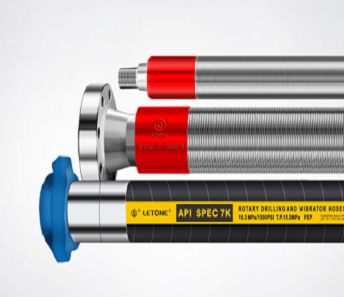"The Science of Hose Durability: How Material Innovation Resists Acid Degradation"
The evolution of hose technology has been driven by the need to combat acid corrosion—a persistent threat in chemical processing. Modern materials science offers solutions that extend hose lifespans, reduce downtime, and safeguard personnel. This article dissects the molecular mechanisms behind acid-resistant hose designs.
Molecular Warfare: How Acids Attack Hoses
Acids disrupt polymer chains through two primary mechanisms:
Hydrolysis: Breaks ester bonds in polymers like PVC, causing swelling and embrittlement.
Oxidation: Accelerates degradation in rubber compounds, leading to cracks and leaks.
For example, concentrated nitric acid (HNO₃) oxidizes natural rubber within hours, while sulfuric acid hydrolyzes PVC at temperatures above 40°C.
Advanced Materials Defying Acids
FEP (Fluorinated Ethylene Propylene):
A Teflon® variant with superior flexibility and lower permeability than PTFE.
Withstands 98% sulfuric acid at 150°C without degradation.
PVDF (Polyvinylidene Fluoride):
Resists chlorinated solvents and oxidizing acids (e.g., chromic acid).
Common in semiconductor manufacturing for hydrofluoric acid (HF) transfer.
Cross-Linked Polyethylene (XLPE):
Used in low-pressure acidic waste lines (e.g., 10% H₂SO₄ in plating plants).
Cost-effective but limited to temperatures below 60°C.
Breakthroughs in Hose Construction
Composite Layers: Dual-layer hoses combine PTFE liners with UHMWPE jackets, balancing chemical resistance and mechanical strength.
Smart Coatings: Nano-ceramic linings reduce acid permeation by 90% compared to uncoated hoses.
Modular Designs: Quick-disconnect fittings with acid-resistant O-rings (e.g., Kalrez®) enable rapid replacement without system shutdown.
Case Study: Acid Recovery in Steel Pickling
A European steel mill replaced its EPDM hoses with PTFE-lined alternatives for transporting 15% HCl during pickling. The upgrade reduced hose replacement frequency from monthly to annually, cutting maintenance costs by 70%.
The battle against acid corrosion is winnable through material innovation. By leveraging fluoropolymers, engineered plastics, and smart designs, industries can achieve unprecedented durability in harsh chemical environments.

 English
English Turkish
Turkish Dutch
Dutch Greek
Greek English
English






